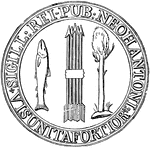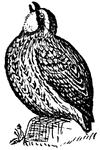
Northern Bobwhite
The Northern Bobwhite, Virginia Quail or (in its home range) Bobwhite Quail (Colinus virginianus) is…
![The Whip-poor-will or whippoorwill, Caprimulgus vociferus, is a medium-sized (22-27 cm) nightjar from North and Central America. The Whip-poor-will is commonly heard within its range, but less often seen. It is named onomatopoeically after its call. This bird is sometimes confused[1] with the related Chuck-will's-widow (Caprimulgus carolinensis) which has a similar but lower-pitched and slower call. Adults have mottled plumage: the upperparts are grey, black and brown; the lower parts are grey and black. They have a very short bill and a black throat. Males have a white patch below the throat and white tips on the outer tail feathers; in the female, these parts are light brown.](https://etc.usf.edu/clipart/57000/57013/57013_whippoorwill_mth.gif)
Whip-poor-will
The Whip-poor-will or whippoorwill, Caprimulgus vociferus, is a medium-sized (22-27 cm) nightjar from…

Swallow Roost
The Sand Martin (Riparia riparia) is a migratory passerine bird in the swallow family. This species…

Purple Martin (Male)
The Purple Martin (Progne subis) is the largest North American swallow at 20 cm length. Adults have…
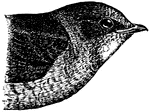
Purple Martin (Female)
The Purple Martin (Progne subis) is the largest North American swallow at 20 cm length. Adults have…

Swamp Sparrow
The Swamp Sparrow, Melospiza georgiana, is a medium-sized sparrow. Adults have streaked rusty and black…
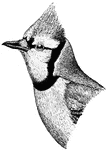
Blue Jay
The Blue Jay (Cyanocitta cristata) is a passerine bird, and a member of the family Corvidae native to…
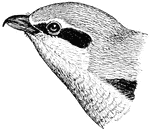
Great Grey Shrike
The Great Grey Shrike (Lanius excubitor) is a member of the shrike family. The Great Grey Shrike breeds…

Barberry
Berberis (Bér-be-ris, barberry, pepperidge bush) a genus of about 450-500 species of deciduous…
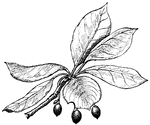
Tupelp
The tupelos, or pepperidge tree, genus Nyssa, are a small genus of about 9 to 11 species of trees with…
![Smilax is a genus of about 300-350 species, found in the tropics and subtropics worldwide. In China for example about 80 are found (39 of which are endemic), while there are 20 in North America north of Mexico[1]. They are climbing flowering plants, many of which are woody and/or thorny, in the monocotyledon family Smilacaceae, native throughout the tropical and warm temperate regions of the world. Common names include catbriers, greenbriers, prickly-ivys and smilaxes. "Sarsaparilla" (also zarzaparrilla, sarsparilla) is a name used specifically for the Jamaican S. regelii as well as a catch-all term in particular for American species. Occasionally, the non-woody species such as the Smooth Herbaceous Greenbrier (S. herbacea) are separated as genus Nemexia; they are commonly known by the rather ambiguous name "carrion flowers"](https://etc.usf.edu/clipart/57000/57029/57029_smilax_mth.gif)
Smilax
Smilax is a genus of about 300-350 species, found in the tropics and subtropics worldwide. In China…

Myrica
Myrica is a genus of about 35-50 species of small trees and shrubs in the family Myricaceae, order Fagales.…

Amelanchier
Amelanchier, also known as shadbush, serviceberry, sarvisberry, juneberry, Saskatoon, shadblow, shadwood,…
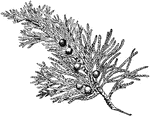
Eastern Juniper
Juniperus virginiana (Eastern Redcedar, Red Cedar, Eastern Juniper, Red Juniper, Pencil Cedar) is a…

Phoebe's Nest
An illustration of a Phoebe's nest in a box. The genus Sayornis is a small group of medium-sized insect-eating…

Giovanni da Verrazzano
Giovanni da Verrazzano (c. 1485 – c. 1528) was an Italian explorer of North America, in the service…
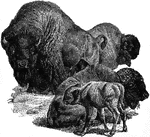
North American Bison
The American Bison (Bison bison) is a bovine mammal, also commonly known as the American buffalo. 'Buffalo'…
Forth Bridge
The Forth Bridge is a cantilever railway bridge over the Firth of Forth in the east of Scotland, to…
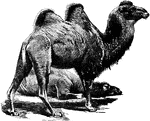
Bactrian Camel
The Bactrian Camel (Camelus bactrianus) is a large even-toed ungulate native to the steppes of north…
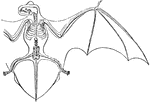
Skeleton and Wing Membranes of the Noctule Bat
The bat genus Nyctalus (Noctule bats) are Evening bats. They are distributed in the temperate and subtropical…
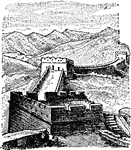
Great Wall of China
The Great Wall of China is a series of stone and earthen fortifications in China, built, rebuilt, and…
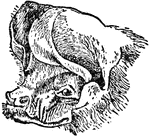
Head of Free-tailed Bat
The Big Free-tailed Bat (Nyctinomops macrotis) is a bat species found in South, North and Central America.
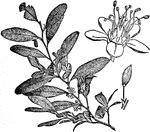
Coca Flower
Coca is a plant in the family Erythroxylaceae, native to north-western South America. The plant plays…
Coca Fruit
Coca is a plant in the family Erythroxylaceae, native to north-western South America. The plant plays…

Colonial Seal of Virginia
The Colonial Seal of Virginia. An Indian kneels before a prominent royal figure.

Berkeley, Virginia (Near Harrison's Landing)
On December 4, 1619, a group of 38 English settlers arrived at Berkeley Hundred, about eight thousand…
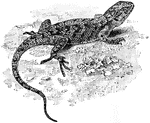
Eastern Fence Lizard
The Eastern fence lizard (Sceloporus undulatus) is a medium sized species of lizard common along the…

Seal of the Board of War and Ordnance
In 1776 the Board of War and Ordnance was created for issuing supplies to troops in the field, and the…
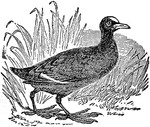
Coot
Coots , are medium-sized water birds which are members of the rail family Rallidae. They constitute…
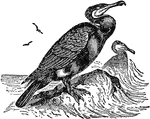
Double-crested Cormorant
The Double-crested Cormorant (Phalacrocorax auritus) is a member of the cormorant family of seabirds.…
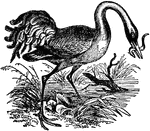
Crane
Cranes are large, long-legged and long-necked birds of the order Gruiformes, and family Gruidae. Unlike…

House Cricket Larva
An illustration of a house cricket larva. Acheta domesticus (house cricket) is a cricket native to Europe.…

House Cricket Pupa
An illustration of a house cricket pupa. Acheta domesticus (house cricket) is a cricket native to Europe.…
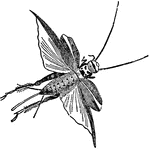
House Cricket
Acheta domesticus (house cricket) is a cricket native to Europe. Both sexes of this grey or brown cricket…

Curassow
Curassows are one of the three major groups of cracid birds. Three of the four genera are restricted…
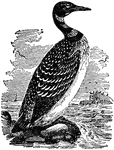
Great Northern Diver
The Great Northern Diver, known in North America as the Common Loon (Gavia immer), is a large member…

Combined Arms of the Washington Family
The coat of arms of George Washington, President of the United States of America from 1789 to 1797,…
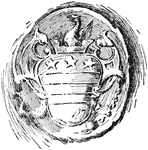
Washington's Seal (From a Letter to Bouquet, 1758)
Washington's Seal incorporates the same design which can be found in Washington's Arms. The coat of…
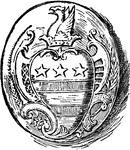
Washington's Private Seal, 1783
Washington's Private Seal incorporates the same design which can be found in Washington's Arms. The…

Washington Arms
The coat of arms of George Washington, President of the United States of America from 1789 to 1797,…

Bald Eagle
The Bald Eagle (Haliaeetus leucocephalus) is a bird of prey found in North America that is most recognizable…
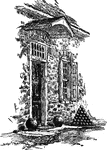
Entrance to Washington's Headquarters, Newburgh
Hasbrouck House served as Washington's headquarters during the Revolutionary War from April 1782 until…

Mackinaw from Round Island
Fort Michilimackinac or Fort Mackinaw was an 18th century French, and later British, fort and trading…
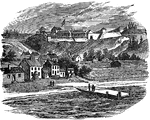
Fort Mackinaw
Fort Michilimackinac or Fort Mackinaw was an 18th century French, and later British, fort and trading…

Great Earthwork near Newark, Ohio
An unknown people inhabited the central portion of North America at an unknown period in its history.…
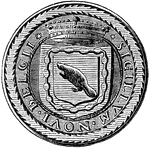
Seal of New Netherland
New Netherland, 1614–1674, is the name of the former Dutch territory on the eastern coast of North…

Pohick Church
Pohick was the first permanent church in the colony to be established north of the Occoquan River, sometime…
![John Wesley (28 June [O.S. 17 June] 1703 – 2 March 1791) was an Anglican cleric and Christian theologian who was the founder of the (Evangelical) Arminian Methodist movement. "Methodism" was originally an unflattering nickname of the "Holy Club" at Oxford University founded by Charles Wesley but led by brother John. Methodism was well advanced in England through George Whitefield who had taken over the responsibility of the Holy Club while the Wesley brothers were in Savannah, Georgia British North America.](https://etc.usf.edu/clipart/57500/57587/57587_john_wesley_mth.gif)
John Wesley
John Wesley (28 June [O.S. 17 June] 1703 – 2 March 1791) was an Anglican cleric and Christian…
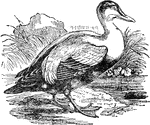
Eider Duck
The Common Eider, Somateria mollissima, is a large (50-71cm body length) sea-duck, which is distributed…
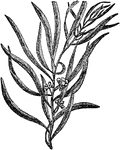
Eucalyptus
Eucalyptus is a diverse genus of trees (and a few shrubs), the members of which dominate the tree flora…

Eupatorium cannabinum
Eupatorium cannabinum, commonly known as Hemp-agrimony, is a herbaceous plant of the family Asteraceae.…
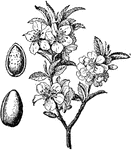
Almond Tree and Fruit
The almond is native to Iran, from northwestern Saudi Arabia, north through western Jordan, Israel,…

Crocus
Crocus (plural: crocus, crocuses) is a genus of perennial flowering plants, native to a large area from…

Valerian
Valerian (Valeriana officinalis, Valerianaceae) is a hardy perennial flowering plant, with heads of…
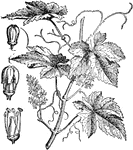
European Grape
Vitis vinifera (Common Grape Vine) is a species of Vitis, native to the Mediterranean region, central…
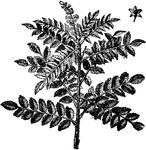
Tanner's Sumac Branch
Sumac is any one of approximately 250 species of flowering plants in the genus Rhus and related genera,…

Eastern Black Oak Branch
Eastern Black oak (Quercus velutina), or more commonly known as simply Black Oak is an oak in the red…

